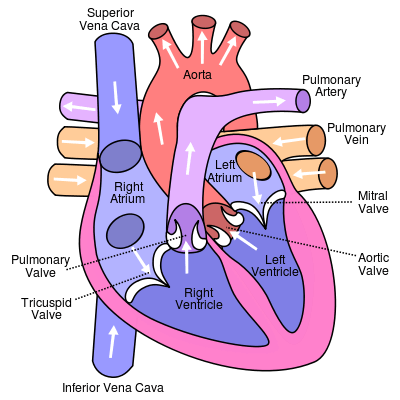Atrium
Atrium may refer to:

Atrium (architecture)
In architecture, an atrium (plural: atria or atriums) is a large open space located within a building. Atria were a common feature in Ancient Roman dwellings, providing light and ventilation to the interior. Modern atria, as developed in the late 19th and 20th centuries, are often several stories high and having a glazed roof and/or large windows, and often located immediately beyond the main entrance doors (in the lobby).
Atria are a popular design feature because they give their buildings a "feeling of space and light". The atrium has become a key feature of many buildings in recent years. Atria are popular with building users, building designers and building developers. Users like atria because they create a dynamic and stimulating interior that provides shelter from the external environment while maintaining a visual link with that environment. Designers enjoy the opportunity to create new types of spaces in buildings, and developers see atria as prestigious amenities that can increase commercial value and appeal.Fire control is an important aspect of contemporary atrium design due to criticism that poorly designed atria could allow fire to spread to a building's upper stories more quickly.

Atrium (heart)
The atrium (plural: atria) is one of the two blood collection chambers of the heart. It was previously called the auricle, but that name has now been in use as being synonymous with the right or left atrial appendage. The atrium is a chamber in which blood enters the heart, as opposed to the ventricle, where it is pushed out of the organ. It has a thin-walled structure that allows blood to return to the heart. There is at least one atrium in animals with a closed circulatory system.
The atrium receives blood as it returns to the heart to complete a circulating cycle, whereas the ventricle pumps blood out of the heart to start a new cycle.
Structure
Humans have a four-chambered heart consisting of the right atrium, left atrium, right ventricle, and left ventricle. The atria, are the two upper chambers. The right atrium receives and holds deoxygenated blood from the superior vena cava, inferior vena cava, anterior cardiac veins and smallest cardiac veins and the coronary sinus, which it then sends down to the right ventricle (through the tricuspid valve) which in turn sends it to the pulmonary artery for pulmonary circulation. The left atrium receives the oxygenated blood from the left and right pulmonary veins, which it pumps to the left ventricle (through the mitral valve) for pumping out through the aorta for systemic circulation.
Relax
Relax may refer to:
Music
Albums
Songs
Film
Computing
See also
Shanti Shanti Shanti
Shanti Shanti Shanti is a 1998 Kannada language comedy film directed by Srinivas. The film starred Abbas, Madhavan, Prakash Raj, Prema, Avni and Satish Shah in leading roles. The film during production became known for its series of innovative ideas for the Kannada film industry, by becoming the first film to have a website and a six-track DTS sound. The film, which featured cinematography from P. C. Sriram, released on 20 November 1998.
After the success of Madhavan's Alaipayuthey, the film was dubbed into the Tamil language as Relax to cash in on his newfound following.
Plot
There is Murthy, the rich but frugal papa, and his two college-going kids, Siddhartha (Madhavan) and Shanti (Avni). Given papa's ways, the two kids feel a bit shackled, and yearn constantly for the good life. Matters come to a head when Siddharth wants to play the guitar at a college function, Shanti wants to take part in the fashion parade—both need money and, of course, papa isn't in the mood to indulge such extravagance.

Degrassi: The Next Generation (season 2)
The second season of Degrassi: The Next Generation commenced airing in Canada on 29 September 2002, concluded on 23 February 2003 and contains twenty-two episodes. Degrassi: The Next Generation is a Canadian serial teen drama television series. This season depicts the lives of a group of eighth and ninth grade school children as they deal with some of the challenges and issues teenagers face such as child abuse, hormones, date rape, body image, hate crimes, sexual identity, alcoholism, protests, and relationships. This is the first season to feature high school students from grade nine and the last season to feature middle school students.
Filming began 10 June 2002, and continued into November 2002. Every episode is named after a song from the 1980s.
The second season aired Sundays at 7:00 p.m. on CTV, a Canadian terrestrial television network, and premiered with a sixty-minute special, "When Doves Cry", which form the first two episodes of season two. Additional episodes were also aired on Fridays during January 2003. In the United States, it was broadcast on The N, a digital cable network aimed at teenagers and young adults. The season was released on DVD as a four disc boxed set on 21 June 2005 by Alliance Atlantis Home Entertainment in Canada, and by FUNimation Entertainment in the US. Registered users of the Canadian and US iTunes Stores are also able purchase and download the season for playback on home computers and certain iPods.
Podcasts:

